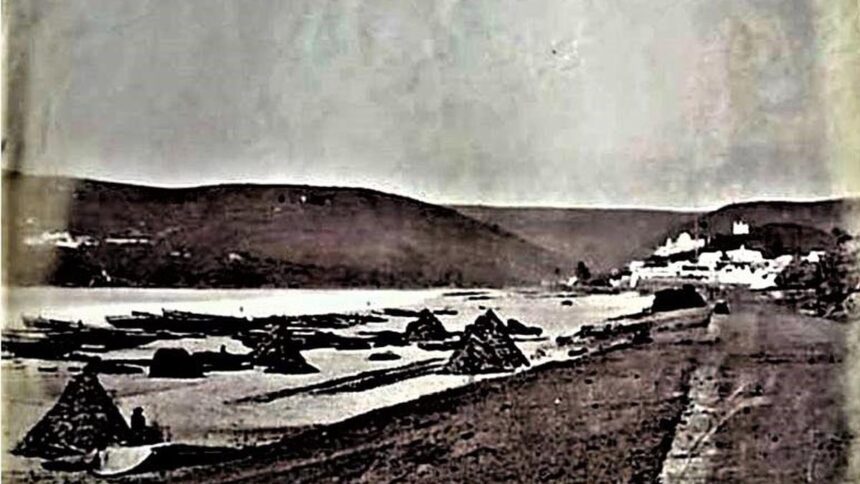The huts of fishermen once dotted the road along the beach in Visakhapatnam before the outbreak of the Second World War. Following the war, these huts were relocated further south to make way for the establishment of the Naval Coast Battery.
Visakhapatnam gained strategic importance during World War II, serving as a crucial transport route for supplying British territories in Hong Kong, Malaya (now Malaysia), Singapore, and Burma. In December 1939, amidst the growing tensions of the war, a naval station was set up in the city, with jurisdiction stretching from Port Baruva in the north to Port Vodarevu in the south.
Beginning in 1940, personnel from the Army, Navy, and Air Force arrived in Visakhapatnam in small groups. Initially, most Army units were housed in tents in open areas, while Air Force units occupied locations around 104 Area and Butchirajupalem near the Civilian Aerodrome, as noted by Vijjeswarapu Edward Paul, a chronicler of the area’s history and a member of INTACH.
The Army sought a large area along the seafront to establish a coastal battery for the city’s defense against potential maritime threats. Identifying a suitable location proved challenging due to existing fishermen’s settlements along the coast. Ultimately, a site was found on the northern seafront where the fishermen were forcibly relocated to an uphill area on the southern side. This new settlement, named Kotha Jalaripeta, remains known by that name today.
At the newly acquired site, the Indian Regiment of Artillery established a unit known as the 5th Indian Heavy Battery in 1940, which was equipped with two 6-inch guns. Following a renaming process, the Visakhapatnam coastal battery became known as the 5th Indian Coast Battery in December 1941.
From its establishment until 1964, the coastal battery in Visakhapatnam was manned by the Artillery Regiment of the Indian Army. In response to the Chinese aggression in 1962, the Indian government transferred control of coastal batteries to the Navy. Consequently, the Visakhapatnam Coastal Battery became known as the Naval Coast Battery, Visakhapatnam (NCB-V).
During the 1971 war, the Naval Coast Battery maintained a state of high alert. To ensure operational readiness, personnel conducted live ammunition exercises during the night with prior notification to the public. The sight of bullets trailing in red across the sky and falling into the sea became a notable event for beachgoers at the time, as described by Paul.
The Eastern Naval Command was assigned responsibility for the defense of the East Coast of India and safeguarding maritime interests along the eastern seaboard. The Naval Coast Battery (NCB-V) was tasked with protecting Visakhapatnam from coastal threats.
Published – August 22, 2023, at 01:07 PM IST










